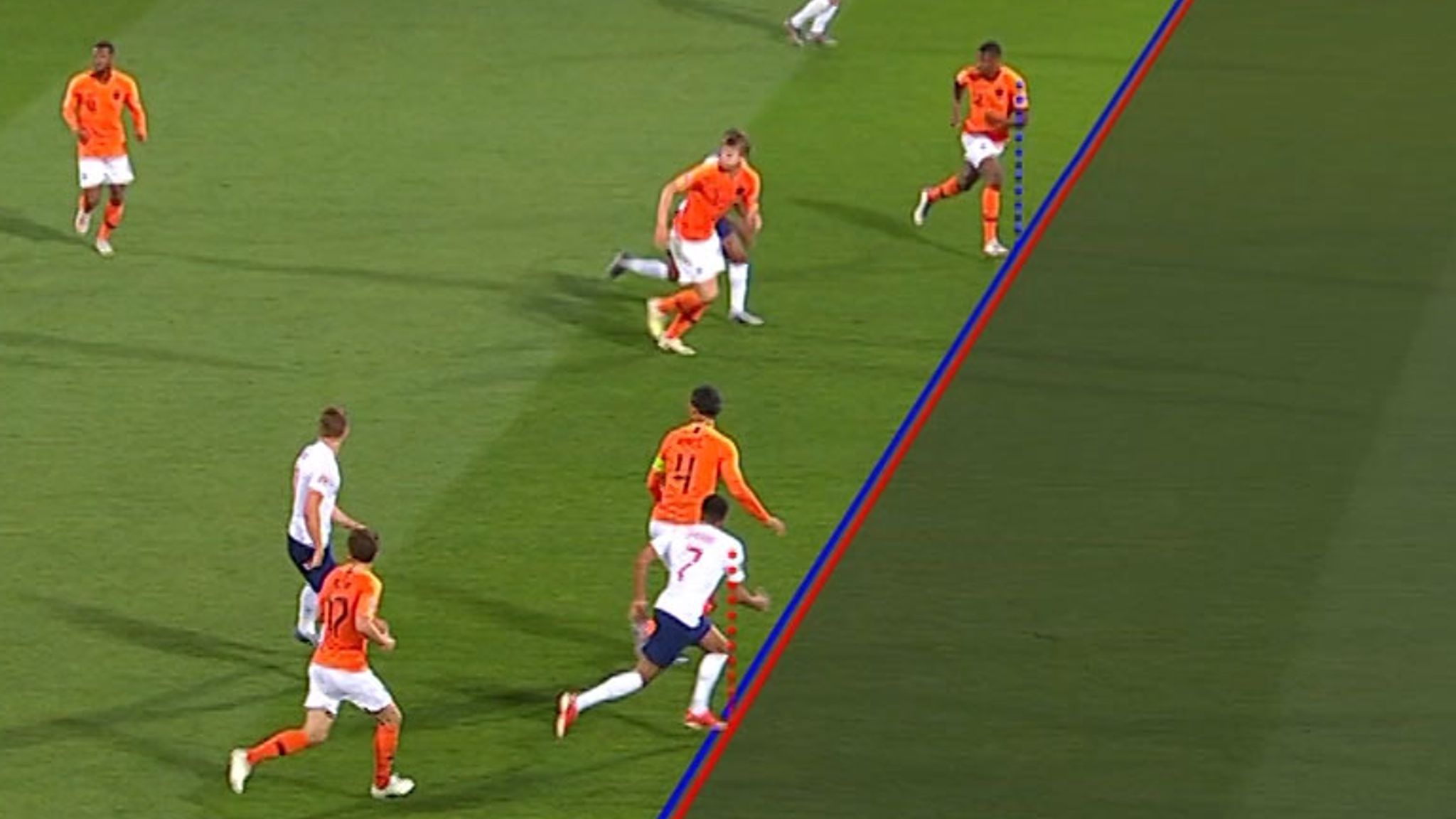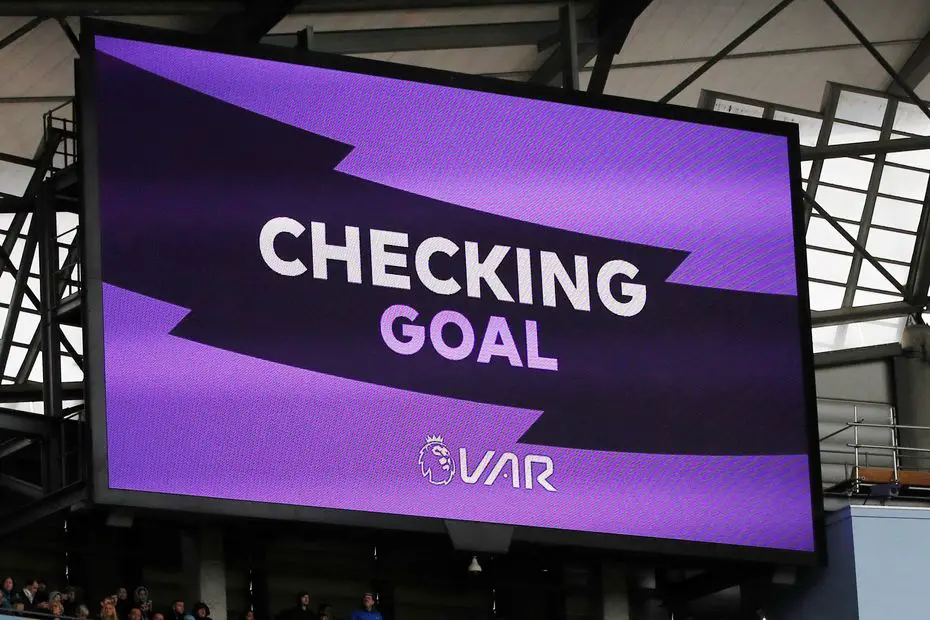What is VAR? A brief history
The concept of a Video Assistant Referee (VAR) has been in the minds of football fans ever since it was realized that technology would permit the sport to have something like it. Cricket, with its third umpire, and Tennis with its reviews have made use of technology for decades and it was now time for football to catch up.
The birth of VAR is widely credited to the Netherlands. KNVB, The Dutch national football body, first sanctioned for VAR to be used during the 2012-13 Eredivisie season. The International Football Association Board (IFAB) was recommended to include it within the laws of the game, which it did in 2018. The FIFA World Cup 2018 was perhaps the biggest test of this new technology which had within it hopes, expectations, and fears of football fans worldwide.
The operation of VAR is simple, at least in principle. A team of referees sit in the VOR (VAR Operation Room) and silently check each decision that is given on the field. Four types of decisions are considered appropriate for VAR to interfere.
First is the legitimacy of a goal – if it was handled or if it was offside etc. Secondly, it is for decisions relating to penalties. Thirdly, VAR concerns itself with yellow/red card decisions, and lastly, in matters pertaining to mistaken identity. (h/t IFAB)
The on-field referee is then given advice by the VAR officials and he/she has the option to take that advice and overturn their decision by reviewing it on a pitch-side monitor.
The hopes
When VAR was just coming around in the early 2010s, one decision had caught the attention of everyone. It was the modern-day ‘Hand of God’ by Thierry Henry against the Republic of Ireland which eliminated the latter from the 2010 World Cup finals. Henry clearly handled the ball before providing an assist to William Gallas to score the goal that took France to the 2010 World Cup at the expense of the opponents.
The players saw it, the fans in the stadium could see it in the replays, and maybe even the referees understood a few minutes later what had happened. But there was nothing that could have been done by then. This led people to question how such decisions could be prevented in the future.
Henry’s handball was one of countless refereeing errors in football history that fans would see in replays and wonder what would have happened had the referees were allowed to watch it back again and change their decisions.

With the introduction of VAR, there was a belief amongst the majority of fans that such instances would be eliminated and football would be a fairer sport than it was before. There were, of course, fears as well. The inhibitions of VAR checks taking too long, emotions of fans being sucked out of the game, and incompetence by referees despite VAR’s help.
But largely, there was a widespread hope that diving, wrongly given penalties, handballs, offsides, or freak cases of mistaken identity like that red card moment in the Arsenal vs Chelsea game where Kieran Gibbs was wrongly sent off would be curtailed. With the World Cup adopting it in the 2018 edition, several leagues followed suit. VAR is now used by the Premier League, Serie A, La Liga, and mostly all major leagues in Europe.
It has slowly become a part of the game to such an extent that some would be led to think it has been within the game for decades. But with a few years of VAR being used extensively, it is now fair to give a judgement of it.
The false hopes
After all these years, we can safely say that VAR has failed, and it is not because of the technology. The concept, on paper, is gold. But its application has gone wrong, with the most evident example being in the Premier League. Despite VAR, there are still subjectively wrong calls made regarding penalties, handballs, sending-offs, simulation, or what qualifies as a foul in a build-up to a goal.
The most controversy raised by VAR is in the sphere of offsides. Pixelated lines and blurred, zoomed-in frames to see offside when checking the legitimacy of a goal has become common. Offside, as a rule, was brought in to prevent opposition players from hanging around the goal of the opponent.
But the rule that was brought in for noble reasons has now become a source of anxiety for every football fan. Centimetres, if not millimetres, are now enough to rule out a goal. Many argue if the attacker even has an unfair advantage in such offside decisions that a goal, which would have otherwise been given without VAR due to the linesman not spotting such a close call, has to be ruled out for it.

Another area of contention is with regards to penalties. VAR ultimately is handled by human beings. It’s not like a video game where computer-generated mechanics oversee every decision made on the field. So with humans operating the technology at the end of the day, there has to be some subjectivity.
A referee has to see a replay and adjudge if the contact was enough for a foul or if the handball was intentional or not. This means that there is never ‘black and white’ in football- the grey areas always make fans wonder why VAR is here to begin with if it cannot clearly clarify what consists of a foul or which tackles warrant a card and which ones do not.
In all honesty, it is the handball rules and consistency on the part of referees that need improvement in that regard. But because of VAR, such holes in the game become exposed to the fans, thus leading to questions of legitimacy about the technology itself that exposed it.
One of the biggest complaints of fans (and even managers) is that VAR takes the emotion out of the game by not offering instant clarity if a goal is legal or not. When was the last time anybody celebrated a goal without worrying if it would be overturned? Earlier, when the ball hit the net, you could give in to the euphoria and jubilation that scoring a goal brings. That is not the case anymore.

In the most extreme scenarios, the linesman having his flag down and the referee pointing to the spot a second after the goal was scored was enough to indicate that celebrations can begin. But that has been stolen away from the fans. What made football exciting and beautiful has now been watered down. Just ask Manchester City fans about how they felt when a Raheem Sterling goal was ruled out in the UEFA Champions League.
The reforms
It is easy to write about it than actually implement it. But there are a few things that VAR has to incorporate before it is totally rejected by fans and footballing personnel everywhere. Bear in mind that the reforms mentioned here largely have to do with referees and laws because VAR, after all, is a piece of technology in the hands of human beings.
Firstly, there has to be consistency with regards to decisions and clarity about what decisions have to be reviewed. One handball that isn’t given in one game and gets adjudged as one in another game raises the feeling of unfairness amongst fans and questions what purpose VAR is serving if subjectivity remains to such an extent. Here, the onus of improvement lies on the referees.
It is impossible to have complete objectivity in refereeing decisions, but there is a massive area for improvement where we stand currently. Secondly, VAR has to do something about offsides.
It is astonishing that in the era of 8K cameras, we are still having to draw lines from pixels on a blurred screen when reviewing offsides. In a lot of cases, there are questions raised if the lines are drawn symmetrically, from the right body part, and if the right frame is selected.

An offside decision begins the moment a pass connects with the boot of a passer. The time between a foot touching the ball and the ball leaving the football is enough to shift a player’s position on the pitch by a centimetre or two. So who decides which frame to pause at? This question was most famously raised in a decision given against Sadio Mane vs Everton earlier this season.
Here, if the flag was not initially raised by the linesman, the referees should allow the goal to stand if the onside and offside lines are touching each other, conveying that there is not enough distance to give the striker an unfair advantage.
Or, the lines should be drawn only from the feet of the players, thus eliminating the visual illusion that many people encounter when seeing a line being ‘wrongly’ drawn from knees, shoulders, or even armpits!
Thirdly, and most importantly, an increase in the use of the pitch-side monitors. Referees are provided with a TV screen of their own on the side of the pitch which they rarely ever use. If referees themselves use it more for touch and go decisions, it eliminates the possibility of differing views on the same decision by a multitude of referees.

The referee on the pitch is more aware of the intensity of the match and how that decision seemed in real-time, thus, being capable of taking a way better decision than anyone sat upstairs.
And lastly, make everything transparent. Have the referees upstairs and on the field explain their calls after the match to a Premier League-appointed media team. Get some mics attached to their collars so fans can hear what went on when a decision affecting their team was given. If VAR is here to make the game fair, then there should be nothing to hide.
Verdict
There are no statistics that exist to exactly pinpoint if, or how much, VAR has cut down on controversial decisions. What we do know is that contentious decisions still take place and controversy surrounds a number of refereeing decisions every single weekend.
Earlier, if your team got a decision given against them, you could excuse it by thinking that the referee could have missed it in the moment. But with VAR, these contentious calls still exist but now, the feeling of unfairness increases.

This is because a fan would feel that the referee had a second chance to correct his clearly wrong call, but didn’t. And if the said fan had seen such a decision go the other way in another game, the feeling of unfairness starts to compound.
There can always be the application of tennis or a cricket-like system where a team has a set number of chances to question a referee’s decision and have it reviewed, with a right call resulting in a used check being restored. Here, the moments of controversy will be reduced and teams will feel like they can control their fate to some extent.
Nevertheless, the aforementioned issues of cameras, subjectivity, consistency, will remain, albeit to a lesser extent. Reforms will be hard to make and even after making them, VAR will still not be perfect. However, perfection is not what fans demand. A level of consistency and transparency is the first step towards stopping VAR from being rejected by the footballing community.

A removal of VAR is the best situation, at least in the opinion of some fans. Football had existed for more than a century without it. Goal-line technology was a minute change made to prevent clear errors in giving goals but that system has been perfected. Hence it is not up for debate.
VAR is a noble idea handed to people who don’t seem to know how to use it. And that may always be the case. But to re-inject emotions and feelings into the beautiful game again, something has to be done about VAR before football as we know it becomes a bad impersonation of a mechanical video game we play on our consoles.

